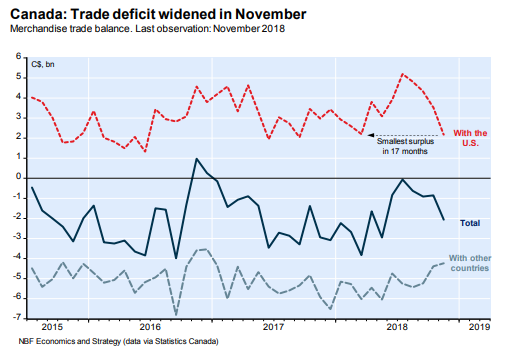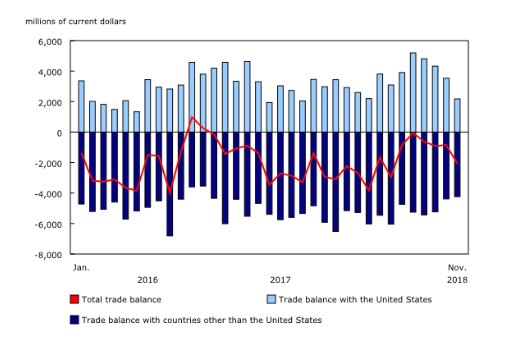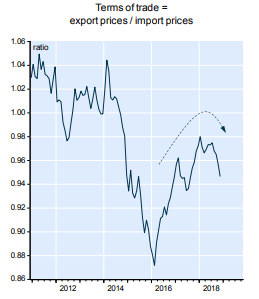Slumping Energy Prices Doubled Canada’s Merchandise Trade Deficit In November
Canada’s merchandise trade deficit rose sharply to $2.1 billion in November from just under a $1 billion in each of the two previous months. In nominal terms, exports fell 2.9% in November while imports declined 0.5%.
As well, in real terms, there was a sharp 1.5% reduction exports in November, while imports stayed roughly flat.
Canada relies on its energy trade surplus to offset trade weaknesses in other areas. As well, Canada requires a trade surplus with the US to offset its trade deficit with the rest of the world.
Canada’s energy trade surplus declined by $0.8 billion in November to a 10-month low of $5.3 billion. Weaker domestic energy prices, which culminated in production cuts in Alberta, helped drive down crude oil exports in November.
In addition, the trade surplus with the U.S. fell from $3.5 billion in October to $2.2 billion in November, its lowest level since September 2017.
In November, Canadian exports declined in 8 of the 11 industrial groupings, including energy products (-9.2%), motor vehicles and parts (-1.5%) and aircraft (-4.9%).
Canada’s terms of trade also deteriorated for a fourth straight month in November, as lower export prices for crude continued to weigh heavily on this index.
Meanwhile, the non-energy trade deficit widened slightly to $7.3 billion., with forestry, basic materials, and aerospace posting large declines.


Canada’s Merchandise Trade Balance (Millions of Dollars)

Canada’s Terms Of Trade

Disclosure: None.



